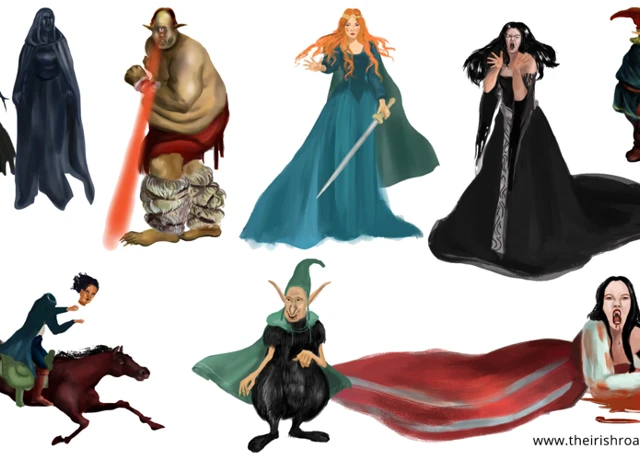Celtic mythology is a treasure trove of captivating legends, filled with a diverse range of mythical creatures that have fascinated people for centuries. From mischievous fairies to majestic dragons, these legendary beings have woven their way into the rich tapestry of Celtic folklore. In this article, we will delve into the enchanting world of Celtic mythology and explore the awe-inspiring tales surrounding some of the most iconic creatures. Get ready to embark on a journey steeped in magic and mystery as we uncover the secrets of these legendary beings.
Contents
- Fairies
- Dragons
- Giants
- Shape-shifters
- Conclusion
-
Frequently Asked Questions
- What are fairies in Celtic mythology?
- Are fairies good or evil?
- Do fairies grant wishes?
- Can fairies fly?
- What is the significance of Leprechauns in Celtic folklore?
- Are Banshees considered fairies?
- Do fairies only exist in Celtic mythology?
- Can humans interact with fairies?
- What is Tír na nÓg?
- Are fairies immortal?
- References
-
Frequently Asked Questions
- 1. What are the Tuatha Dé Danann and their significance in Celtic mythology?
- 2. Are pixies and leprechauns the same creatures?
- 3. What are some other fairy creatures in Celtic mythology?
- 4. Do dragons have a significant place in Celtic mythology?
- 5. What distinguishes the Welsh Dragon from other dragon legends?
- 6. Are there any other dragon legends in Celtic mythology?
- 7. Who were the Fomorians and what role did they play in Celtic mythology?
- 8. Who is Balor, and why is he considered a formidable giant in Celtic mythology?
- 9. Are there any other giant myths in Celtic folklore?
- 10. What are some examples of shape-shifters in Celtic mythology?
- References
- Read More
Fairies
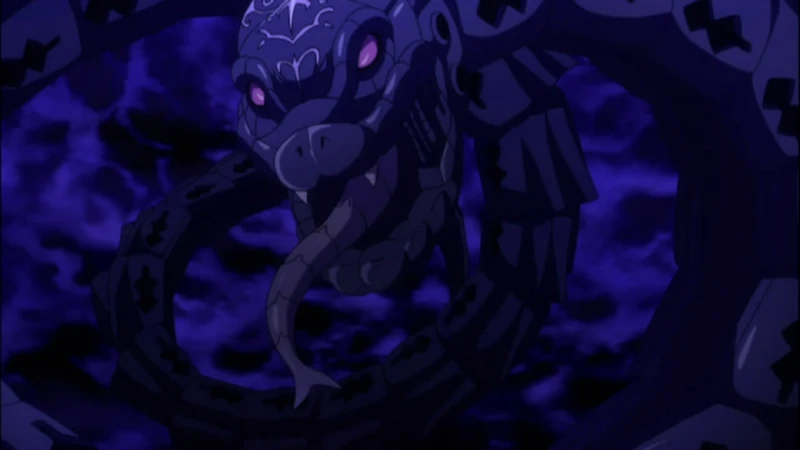
Fairies, with their ethereal beauty and supernatural abilities, hold a prominent place in Celtic mythology. The Tuatha Dé Danann, or the People of the Goddess Danu, are one of the most revered fairy clans in Irish folklore. According to legend, they were a race of divine beings who ruled over Ireland before the arrival of humans. These mystical beings possessed incredible powers and were skilled in magic, poetry, and music. It is said that they retreated beneath the hills of Ireland and became the fairy folk, living in a parallel world known as “Tír na nÓg,” the Land of Youth. Another famous group of fairies is the Pixies and Leprechauns. Pixies are small in stature and known for their playful and mischievous nature, while Leprechauns are often depicted as solitary fairies who guard their pots of gold at the end of rainbows. Additionally, Celtic mythology is teeming with a myriad of other fascinating fairy creatures, such as Banshees, Sidhe, and Bean Sidhe, each with their own unique traits and stories. Now, let’s dive deeper into the enchanting world of these mythical beings and uncover the secrets they hold.
The Tuatha Dé Danann
The Tuatha Dé Danann are a fascinating group of mythical beings who play a central role in Celtic folklore. According to Irish mythology, they were a powerful and otherworldly race of deities who ruled over Ireland before the arrival of humans. The name “Tuatha Dé Danann” translates to “the People of the Goddess Danu,” indicating their divine origins. These fairy-like creatures were known for their exceptional beauty, wisdom, and magical abilities. They were masterful in various forms of enchantments, including shape-shifting and illusion. The Tuatha Dé Danann were not only skilled in magic but also possessed great expertise in poetry, music, and craftsmanship.
The legends surrounding the Tuatha Dé Danann portray them as formidable warriors and skilled strategists. They were said to have possessed magical artifacts, such as the mystical sword known as “Claíomh Solais,” or the “Sword of Light,” which was believed to be indestructible.
According to mythology, the Tuatha Dé Danann engaged in a great battle known as the Battle of Mag Tuired, where they fought against the historical invaders known as the Milesians. Although the Tuatha Dé Danann were ultimately defeated, they managed to strike a deal with the Milesians, ensuring their continued presence in the world.
The Tuatha Dé Danann eventually retreated beneath the hills of Ireland and became the fairy folk, residing in a hidden realm known as “Tír na nÓg” or the Land of Youth. In Irish folklore, they are often seen as the “fairies” or “little people” who inhabit the magical landscape of Ireland. Belief in the Tuatha Dé Danann and their influence on human affairs remained strong in Irish culture for centuries.
The tales of the Tuatha Dé Danann have captured the imaginations of countless individuals, inspiring numerous works of literature, art, and music. Their connection to the ancient mystical world continues to spark curiosity and fascination among those exploring Celtic mythology and folklore.
Pixies and Leprechauns
Pixies and Leprechauns are among the most beloved and well-known creatures in Celtic mythology. Pixies are small mythical beings, often depicted as tiny, mischievous creatures with delicate wings. They are known for their playful nature and are said to enjoy causing harmless pranks. Pixies are closely associated with nature and are believed to live in forests, meadows, and other natural landscapes. While they are generally mischievous, they are not considered malevolent and are often viewed as friendly guardians of nature.
Leprechauns, on the other hand, are solitary fairies known for their association with Ireland and their legendary pots of gold. These mischievous creatures are often depicted as small, old men dressed in green coats and hats, carrying a shillelagh (a wooden walking stick). Leprechauns are skilled cobblers and are said to spend their time crafting and repairing shoes. According to Irish folklore, if you manage to catch a Leprechaun, they may grant you three wishes in exchange for their freedom. However, be careful, as Leprechauns are notoriously tricky and might try to trick you out of your wishes.
Pixies and Leprechauns have become iconic symbols of Celtic mythology and are often associated with luck, magic, and the whimsical side of Irish folklore. Their popularity has spread far beyond Celtic lands, captivating the imaginations of people around the world. Whether it’s the mischievous nature of the Pixies or the elusive charm of the Leprechauns, these mythical creatures continue to transcend time and culture, becoming a beloved part of fantasy and folklore.
Other Fairy Creatures
Other Fairy Creatures in Celtic mythology add another layer of mystique to the already fascinating realm of these magical beings. Here are a few noteworthy ones:
1. Banshees: Often associated with death and the afterlife, Banshees are female spirits who wail and keen to warn of impending doom or the passing of a loved one. They are said to have long, flowing hair and typically wear white garments.
2. Sidhe: The Sidhe, also known as the Aos Sí, are a supernatural race of fairies that reside in the hills and mounds of Ireland. They are known for their beauty and ability to shape-shift. Crossing paths with the Sidhe is said to bring both blessings and misfortune.
3. Bean Sidhe: Translated as “woman of the fairy mound,” the Bean Sidhe, or Banshee, is a specific type of fairy creature associated with the Gaelic tradition. They are known for their distinctive wailing cries that foretell a death in a family or village.
4. Pookas: These mischievous shape-shifting fairies are known for their ability to transform into various animals, including horses, goats, and rabbits. Pookas are known for their playful pranks and often enjoy leading unsuspecting travelers astray.
5. Changelings: Changelings are fairy creatures who are believed to be left in the place of human babies. They are often described as sickly and devious, causing trouble for their unsuspecting adoptive families.
6. Clurichauns: Similar to Leprechauns, Clurichauns are solitary fairies who are known for their love of alcohol. They are often depicted as small, raggedy creatures who guard cellars and wine cellars, but they can be tricksy if they are not treated with respect.
These are just a few examples of the diverse range of fairy creatures that inhabit Celtic mythology. Each one brings its own unique characteristics and tales, adding to the enchanting world of Celtic folklore. Exploring the stories and legends surrounding these magical beings provides a glimpse into the rich tapestry of Celtic culture and imagination. To learn more about Celtic mythology and its origins, you can check out this article on mythology origins and the Ophiuchus constellation.
Dragons
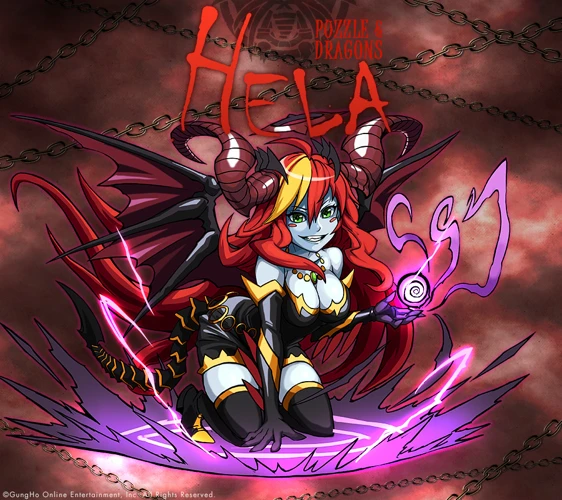
Dragons, formidable creatures of immense power and ancient wisdom, loom large in the realm of Celtic mythology. One such legendary dragon is the Irish Dragon, known as the “Pendragon of Eire.” This majestic beast, said to dwell in the deep lakes and rivers of Ireland, possessed the ability to breathe fire and was revered as a guardian of the land. Another significant dragon in Celtic lore is the Welsh Dragon, often associated with King Arthur and the emblem of Wales. This fierce creature, with its red scales and piercing gaze, symbolized strength and protection. Celtic mythology also speaks of other dragons, each with their own unique characteristics and stories. These creatures, with their mythical presence and awe-inspiring presence, continue to captivate the imaginations of people to this day. So, join us as we unravel the fascinating tales behind these magnificent dragons and delve into the secrets they hold.
The Irish Dragon
The Irish Dragon stands as a fearsome and powerful creature in Celtic mythology. Often depicted as a large, serpentine beast with wings and scales, the Irish Dragon possesses immense strength and is believed to have the ability to breathe fire. These dragons were not mere beasts but were considered divine beings, associated with kingship and nobility. In Celtic legends, dragons were seen as guardians and protectors, often safeguarding precious treasures or sacred places. One famous tale of an Irish Dragon revolves around the hero Fionn mac Cumhaill, also known as Finn McCool. According to the story, Fionn encountered a ferocious dragon and managed to slay it, gaining wisdom and knowledge from consuming its flesh. This tradition of gaining power from dragons is prevalent in Celtic mythology, where the dragon symbolizes transformation and the acquisition of ancient wisdom. The Irish Dragon is a symbol of strength, courage, and mysterious power, serving as a captivating character in the rich tapestry of Celtic folklore.
The Welsh Dragon
The Welsh Dragon is a legendary creature deeply intertwined with Welsh folklore and a symbol of national pride. Known as “Y Ddraig Goch” in Welsh, this mighty dragon is an emblem of Wales and can be found on the country’s flag. The story of the Welsh Dragon dates back to ancient times and is believed to have originated from tales of a great red dragon.
According to legend, the Welsh Dragon was said to reside in a stronghold called Dinas Emrys in Snowdonia. The dragon was prophesized to cause turmoil in the land, and a young boy named Merlin was tasked with calming its fury. The young Merlin revealed the true nature of the conflict – two dragons, one red and one white, representing the Welsh and the Saxons, were battling beneath the fortress.
In this epic duel, the red dragon, symbolizing the Welsh, eventually emerged victorious, driving out the white dragon and securing Wales from its enemies. To this day, the presence of the Welsh Dragon serves as a reminder of this triumph and the resilience of the Welsh people.
Legend has it that if Wales were to be in great peril, the Welsh Dragon would awaken from its slumber and come to the rescue. The dragon represents power, protection, and the indomitable spirit of Wales. It has become an enduring symbol of Welsh identity and is celebrated in various traditions, festivals, and ceremonies.
The Welsh Dragon holds a special place in Welsh mythology and continues to capture the imagination of people worldwide. Its fierce and majestic persona has made it a beloved symbol, standing as a testament to the rich heritage and mythology of Wales. So, the next time you encounter the striking image of the Welsh Dragon, remember the ancient legends that paved the way for its iconic status in Welsh culture.
Other Dragon Legends
Other Dragon Legends in Celtic mythology showcase the vast array of dragon-like creatures that populate the folklore of the Celtic lands. One such legend is that of the Pendragon, a term meaning “head dragon” or “chief dragon.” In Welsh mythology, the Pendragon is a powerful dragon who guards a hoard of treasures and possesses the ability to fly. The Pendragon is often associated with King Arthur and is seen as a symbol of his mythical reign. Another intriguing dragon figure is the Lindworm, a serpent-like creature found in Norse and Celtic mythologies. The Lindworm is depicted as a wingless dragon with multiple heads and a fearsome reputation. It is said to possess venomous breath and the ability to cause devastation wherever it goes. Nidhogg, a monstrous dragon from Norse mythology, is also sometimes linked to Celtic folklore. Known as the “Dread Biter,” Nidhogg gnaws on the roots of the world tree, Yggdrasil, threatening the stability of the cosmos. These captivating dragon legends further illustrate the rich and diverse tapestry of mythical creatures woven into the vibrant fabric of Celtic mythology.
Giants
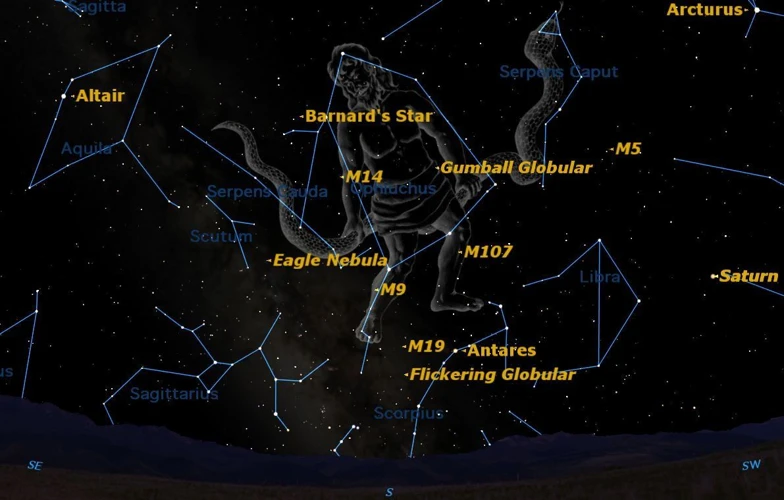
Giants play a formidable role in Celtic mythology, often portrayed as powerful and colossal beings. One prominent group of giants is The Fomorians, who were believed to be ancient inhabitants of Ireland. Described as a race of sea-faring warriors, the Fomorians were known for their immense strength and dark, otherworldly powers. One of the most legendary Fomorian figures was Balor, a monstrous giant with a single, destructive eye. According to myth, his eye had the power to unleash devastation upon anything it looked upon. Giants in Celtic lore were not limited to the Fomorians; various stories feature other colossal beings, such as the mighty Giant of Cerne Abbas in England and the legendary Scottish giant Finn MacCool. These tales of giants continue to captivate and intrigue, showcasing the grandeur and awe-inspiring nature of these mythical creatures.
The Fomorians
In Celtic mythology, the Fomorians are a formidable and mysterious race of giants who play a significant role in the tales of ancient Ireland. Depicted as monstrous beings with grotesque features, the Fomorians are often associated with chaos, darkness, and the forces of nature. Unlike other giants in Celtic mythology, the Fomorians were seen as beings of destruction and malevolence. They were said to have a single eye, a single arm, and a single leg, giving them a fearsome and intimidating appearance. One of the most prominent figures among the Fomorians is Balor, the fearsome king and tyrant. According to legend, Balor possessed a powerful eye that could wreak havoc and destruction upon his enemies with a single glance. He was a symbol of terror and served as a formidable villain in many Celtic myths. The Fomorians often clashed with the Tuatha Dé Danann, engaging in epic battles that shaped the destiny of ancient Ireland. These tales symbolize the eternal struggle between order and chaos, light and darkness. The legends of the Fomorians continue to captivate and intrigue, reminding us of the enduring power of myth and the heights of imagination achieved in Celtic folklore. To learn more about the scientific knowledge of ancient astronomers, be sure to check out /scientific-knowledge-ancient-astronomers/.
The Formidable Balor
The Formidable Balor is a legendary giant from Celtic mythology, known for his terrifying appearance and immense power. He is often depicted as a one-eyed giant with a single eye in the center of his forehead, which possesses a deadly gaze capable of obliterating anything in its path. Balor is associated with the Fomorians, a race of monstrous beings who were adversaries of the Tuatha Dé Danann. According to the myth, Balor was prophesied to be killed by his own grandson, which led him to imprison his daughter, Ethlinn, in a tower to prevent her from having children. However, his grandson Lugh managed to escape and ultimately fulfilled the prophecy. Balor’s strength and ferocity in battle were renowned, and he was feared by both humans and gods alike. The tale of the Formidable Balor serves as an intriguing example of the larger-than-life figures that populate Celtic mythology, showcasing their power, conflicts, and the intricate web of relationships that shape their stories. (To learn more about capturing celestial wonders, check out our article on tips for photographing meteor showers.)
Other Giant Myths
Other Giant Myths in Celtic mythology go beyond the Fomorians and Balor, adding even more depth to the fascinating lore. One prominent figure is the giant Gogmagog, who plays a significant role in the legend of the founding of London. According to the story, Gogmagog was the last surviving member of a race of giants that inhabited Britain. He faced off against the legendary hero Corineus, and after a fierce battle, was defeated and thrown from a cliff to his demise. The tale of Gogmagog symbolizes the triumph of humanity over the forces of chaos and represents the establishment of civilization in the region. Another giant of note is Ysbaddaden, a monstrous foe featured in the Welsh story of Culhwch and Olwen. Ysbaddaden, known for his terrifying appearance and fierce demeanor, sets a series of impossible tasks for Culhwch to complete in order to win the hand of his daughter. These tasks serve as a testament to the hero’s bravery and determination. These “Other Giant Myths” showcase the vastness of Celtic mythology and the wide range of mythical beings that populate its narratives. From epic battles to intricate quests, the stories surrounding these giants add layers of excitement and intrigue to the rich tapestry of Celtic folklore.
Shape-shifters
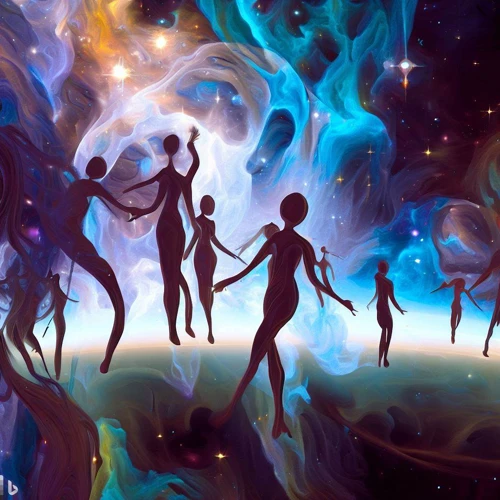
Shape-shifters, beings capable of transforming their physical forms, are an intriguing aspect of Celtic mythology. Among these shape-shifting creatures are the Selkies and Merfolk, aquatic beings with the ability to change from seals to humans. Their mesmerizing songs and captivating beauty have fascinated storytellers throughout the ages. Another famous group of shape-shifters in Celtic mythology are Werewolves and Skinwalkers, beings that can turn into wolves or other animals. These creatures are often associated with moonlit nights and primal instincts. Celtic folklore also features a wide array of other transforming beings, such as the Púca – a mischievous creature that can take on various forms, and the Gwrach y Rhibyn – a frightful hag that can change its appearance to deceive and terrify unsuspecting victims. The ability to shape-shift adds an element of mystique and unpredictability to these legendary beings, making them even more alluring and enigmatic.
Selkies and Merfolk
Selkies and Merfolk are captivating beings that have long captured the imagination in Celtic mythology. In Scottish folklore, Selkies are said to be seals that can shed their skin and transform into human-like creatures. These creatures are often described as having the ability to transform into seductive humans by removing their seal skin. Once in human form, Selkies can live among humans, often forming close relationships and even marrying them. However, their true nature remains tied to the sea, and they long to return to the ocean. Many tales depict Selkies being lured back to the water when their hidden sealskins are discovered. On the other hand, Merfolk, also known as mermaids and mermen, are found in various Celtic myths and legends. These half-human, half-fish creatures are believed to possess beauty, charm, and enchanting singing voices. They are often associated with the sea and its mysteries, dwelling in underwater kingdoms or traversing the ocean depths. Legends often portray Merfolk as benevolent and helpful to humans, providing assistance or guidance when needed. However, they can also be mischievous, leading sailors astray or enchanting them with their songs and appearances. The stories of Selkies and Merfolk continue to captivate the hearts and minds of those who are drawn to the enchantment of the sea and its mythical inhabitants.
Werewolves and Skinwalkers
Werewolves and Skinwalkers are intriguing creatures in Celtic mythology, embodying the concept of shape-shifting beings. In Celtic folklore, werewolves are often associated with the moon and the power of transformation. According to legend, individuals could transform into werewolves by wearing a magical wolf’s pelt or through a curse. During their transformation, these individuals acquired the strength, speed, and instincts of a wolf, making them formidable and dangerous. Skinwalkers, on the other hand, originate from Native American mythology but also have parallels in Celtic folklore. They are believed to be witches or shamans who have the ability to transform into animals at will, usually wolves or other predatory creatures. These mythical beings were known for their malevolent intentions, using their shape-shifting abilities to harm or terrorize others. Legends often depict them as dark and sinister figures, capable of causing chaos and instilling fear in those who encountered them. The tales of werewolves and skinwalkers, with their mystique and power to transform, continue to captivate and intrigue individuals to this day.
Other Transforming Beings
Other Transforming Beings encompass a wide array of mythical creatures in Celtic mythology that possess the ability to shape-shift and assume different forms. One such creature is the Selkie, a being found in Scottish and Irish folklore. Selkies are said to be seals in the water, but can shed their skin to become human on land. These enchanted sealskin cloaks allow them to return to their true form at will. Stories often revolve around the romance between a human and a Selkie, where the Selkie eventually returns to the sea, leaving their human lover behind. Merfolk, on the other hand, exist both in Celtic mythology and folklore from around the world. These half-human, half-fish beings possess the ability to transform between their human and fish forms. They are often associated with themes of beauty, mystery, and the depths of the sea. Another transforming being is the Werewolf, known as a creature that can change from human to wolf under the influence of the full moon. Werewolf legends are prevalent in many cultures, including Celtic mythology. The concept of a cursed individual transforming into a wolf-like creature evokes fear and fascination. Skinwalkers, on the other hand, are creatures found in Celtic mythology as well as Native American folklore. These beings have the power to shape-shift into different animals, imitating their appearance and abilities. Considered dark and malevolent, skinwalkers are often associated with witchcraft and are feared by many. It is important to note that the concept of transforming beings is not limited to these examples; Celtic mythology has a vast repertoire of mythical creatures that possess the power of transformation, each with its own unique traits and stories.
Conclusion
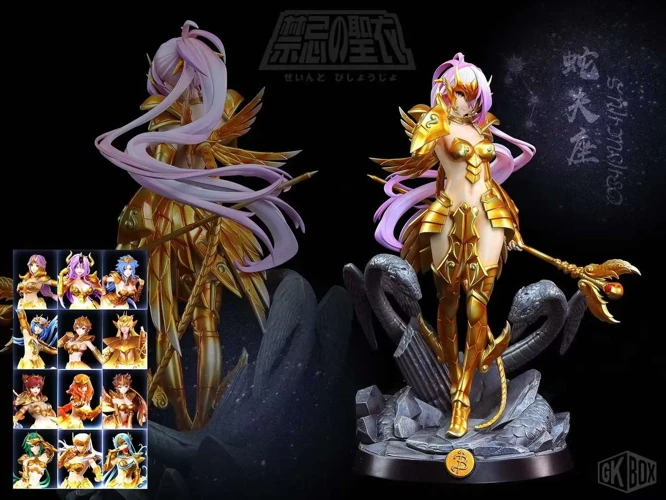
In conclusion, the realms of Celtic mythology are a treasure trove of legendary creatures that continue to capture our imagination and intrigue us to this day. From the whimsical fairies to the majestic dragons, the giants, and the shape-shifters, every entity in Celtic folklore carries its own unique charm and significance. These mythical beings serve as a reflection of the Celtic culture and its deep connection to nature, magic, and the supernatural. Through their stories, we are transported to a world where enchantment and wonder reign supreme. The allure and fascination with these legendary creatures is evident in their enduring presence in literature, art, and popular culture. So, whether you are captivated by the mischievous fairies, in awe of the mighty dragons, or intrigued by the shape-shifting abilities of mythical beings, the magical realm of Celtic mythology offers a never-ending source of inspiration and mystique. With each tale passed down through generations, we are reminded of the rich heritage and captivating folklore that continues to captivate us. It is in these stories that we discover the power of imagination and the enduring legacy of these legendary creatures in Celtic mythology.
Frequently Asked Questions

What are fairies in Celtic mythology?
Fairies in Celtic mythology are supernatural beings that are often depicted as ethereal and magical. They can range in size, from tiny pixies to more humanoid-like beings. They are known for their connection to nature and their ability to wield powerful magic.
Are fairies good or evil?
Fairies in Celtic mythology can be both good and mischievous. While some fairies are benevolent and helpful to humans, others are known to play pranks or cause mischief. It is important to treat fairies with respect and caution.
Do fairies grant wishes?
Some fairies are known to have the power to grant wishes, but they often do so with a twist. It is said that one must be careful what they wish for when dealing with fairies, as the outcome may not be exactly as expected.
Can fairies fly?
Yes, fairies in Celtic mythology are often depicted as being capable of flying. They are thought to have delicate wings that allow them to move gracefully through the air.
What is the significance of Leprechauns in Celtic folklore?
Leprechauns are a type of fairy in Celtic folklore and are known for their mischievous nature and their association with pots of gold. They are often depicted as solitary creatures who spend their time making and mending shoes.
Are Banshees considered fairies?
Yes, Banshees are considered a type of fairy in Celtic mythology. They are often described as female spirits who wail and keen to foretell a death or tragedy.
Do fairies only exist in Celtic mythology?
Fairy folklore exists in many different cultures worldwide. While Celtic mythology has a rich tradition of fairy lore, similar mythical creatures can be found in other mythologies as well.
Can humans interact with fairies?
According to Celtic mythology, humans can interact with fairies, but it is important to be cautious and respectful. Fairies have their own rules and customs, and it is wise to approach them with care and avoid offending them.
What is Tír na nÓg?
Tír na nÓg, meaning the Land of Youth, is a mythological realm mentioned in Celtic folklore. It is believed to be a parallel world inhabited by the Tuatha Dé Danann and other fairy beings. It is a place of eternal youth and beauty.
Are fairies immortal?
Fairies are often depicted as having longer lifespans than humans, but they are not necessarily immortal. Some stories suggest that fairies can live for hundreds or even thousands of years, while others mention that they can be killed or pass away naturally.
References
Frequently Asked Questions

1. What are the Tuatha Dé Danann and their significance in Celtic mythology?
The Tuatha Dé Danann are a group of supernatural beings known as fairies in Celtic mythology. They were believed to be the ancient deities of Ireland, possessing great power and wisdom. The Tuatha Dé Danann played a prominent role in Irish folklore and were associated with magic, arts, and warfare.
2. Are pixies and leprechauns the same creatures?
No, pixies and leprechauns are different creatures in Celtic mythology. Pixies are small, mischievous fairies originating from the folklore of Cornwall, England. Leprechauns, on the other hand, are solitary fairies from Irish folklore who are famous for their love of practical jokes and hidden pots of gold.
3. What are some other fairy creatures in Celtic mythology?
In addition to the Tuatha Dé Danann, pixies, and leprechauns, Celtic mythology features various other fairy creatures. These include Banshees, ethereal female spirits associated with foretelling death; Brownies, helpful household fairies; and Selkies, seal-like creatures that can transform into humans.
4. Do dragons have a significant place in Celtic mythology?
While not as prominent as in some other mythologies, dragons do exist in Celtic mythology. They often symbolize power, protection, and wisdom. Celtic dragon legends vary, but they are generally depicted as fearsome creatures guarding treasures or as allies of heroes in their quests.
5. What distinguishes the Welsh Dragon from other dragon legends?
The Welsh Dragon, also known as Y Ddraig Goch, holds a special place in Welsh mythology and is a national symbol of Wales. It is often depicted as a red dragon, representing the fighting spirit of the Welsh people. The Welsh Dragon is associated with strength, leadership, and protection.
6. Are there any other dragon legends in Celtic mythology?
Apart from the Irish and Welsh dragons, Celtic mythology includes other dragon legends. For example, the Cornish Dragon represents the county of Cornwall, and the Scottish Dragon is associated with the Highland clans. These dragons often have specific regional significance and tales.
7. Who were the Fomorians and what role did they play in Celtic mythology?
The Fomorians were a race of giants or monstrous beings in Celtic mythology. They were known for their brutal nature and were believed to have been the original inhabitants of Ireland before the arrival of the Tuatha Dé Danann. The Fomorians engaged in many conflicts with the Tuatha Dé Danann.
8. Who is Balor, and why is he considered a formidable giant in Celtic mythology?
Balor is a legendary giant in Celtic mythology, particularly in Irish folklore. He is associated with the Fomorians and is known for his terrifying appearance and deadly eye. Balor’s eye had a destructive power that could kill anyone it looked upon. He often appeared as a fierce warrior in battles.
9. Are there any other giant myths in Celtic folklore?
Yes, Celtic mythology includes various other giant myths apart from the Fomorians and Balor. One notable example is the giant Fionn mac Cumhaill, also known as Finn McCool, who appears in Irish mythology as a warrior and leader of the Fianna. His stories are associated with the Giant’s Causeway in Northern Ireland.
10. What are some examples of shape-shifters in Celtic mythology?
Celtic mythology features a variety of shape-shifters, including Selkies and Merfolk, who can transform between human and seal forms. Additionally, werewolves and skinwalkers are associated with Celtic folklore and believed to have the ability to transform into wolves or other animals. Other transforming beings include the Morrigan, a goddess who could take the form of a crow, and the Selkie, who can transform into a seal.
References
- What are some Celtic myths and legends that include …
- Irish Mythological Creatures | Banshees, Monsters & Folklore
- 20 Legendary Creatures in Celtic Mythology That Resided …

